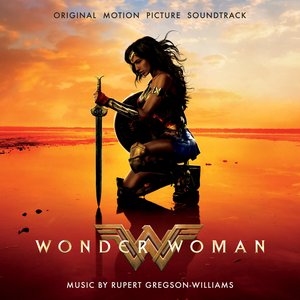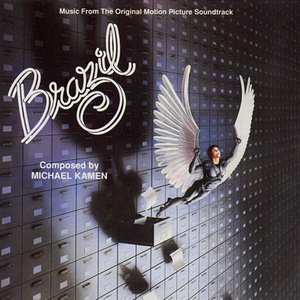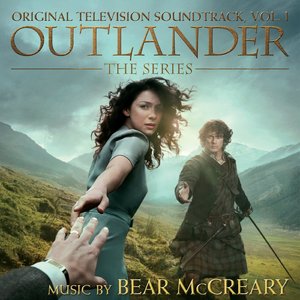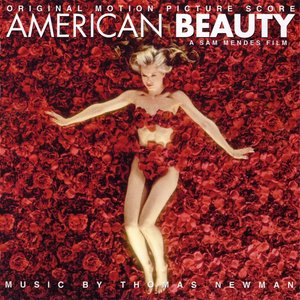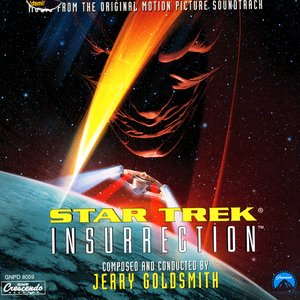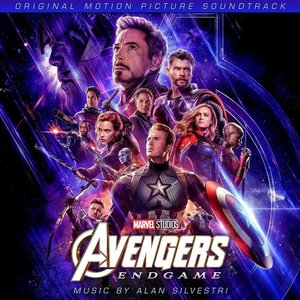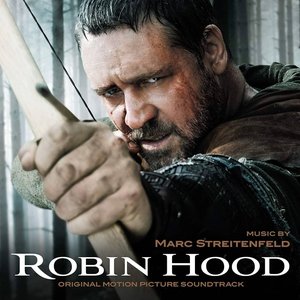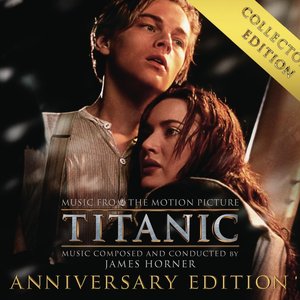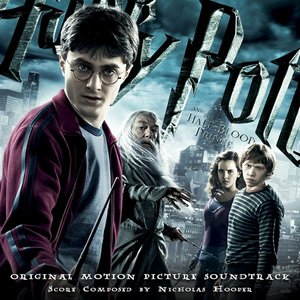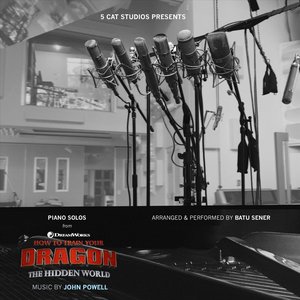Wiki
-
Release Date
13 December 2005
-
Length
74 tracks
TEXTS
Choral lyrics in The Lord of the Rings films reference the past histories and broader concepts of Tolkien’s universe. Several passages directly quote the author’s writing, though the majority of the verses are original, scribed by Philippa Boyens, Fran Walsh, David Salo and, for Enya’s work, Roma Ryan. Shore often uses the texts in a nonlinear fashion, much as one would find in modern opera. Verses are often begun mid-stanza and certain syllables are repeated to create a beautiful vocal mosaic of the languages of Middle-earth. At other times, the writing is presented unaltered with full verses acting as counterpoint to the immediate action. Seen here is the text in its original complete format, just as it was presented to Howard Shore before he set it to music.
David Salo, the world’s leading expert on Tolkien languages, provided the translations, resetting texts in the languages of Middle-earth. Often, however, Tolkien’s concept of the languages didn’t include the detailed vocabularies the filmmakers wished to use. In these cases Salo’s work extended to language creation, where he found himself expanding the existing dialects to more accurately express the writing.
For Fellowship, texts were translated into five languages, each representative of the cultural histories of Tolkien’s world: the Elvish languages of Quenya and Sindarin; Khuzdûl, the language of the Dwarves; Adûnaic, the oldest language of Men; and Black Speech, the language of Mordor.
INSTRUMENTS
HOBBITON
The Hobbit/Shire theme’s Rural Setting is most closely connected to these signature hobbit instruments. But as the hobbits depart the Shire and adventure their way through Middle-earth, these Celtic sounds continually make their way into the edges of the orchestra as a reminder of what the Shire folk have left behind.
BODHRÁN
Listening Example: Disc One | Track Two | 1:34
The bodhrán (Bough-rawn) is just one of an ancient family of frame drums that consist of a stretched hide over a wooden shell. Bodhrán drums are believed to have originated in Ireland (or possibly emigrated there via the Roman Empire or Arabic trade routes), and derived their name from a Gaelic description of the sound, roughly translated as “thundered.”
FIDDLE
Listening Example: Disc One | Track Two | 1:18
The fiddle itself is not unlike the classical violin of the orchestra (though occasionally performers will adapt the instruments’ bridges), but the playing techniques differ slightly allowing for greater latitude in bowing and ornamentations.
WHISTLE
Listening Example: Disc One | Track Three | 0:00
The Irish whistle (also known as the penny whistle, vertical flute, flagolet, stáin or feadóg) may be the oldest instrument in Celtic music. Originally carved from bone, today’s whistles are generally made of wood or metal.
DULCIMER
Listening Example: Disc One | Track Two | 1:18
Hammered dulcimers consist of a series of wires stretched tightly over a wooded resonating frame and struck with small hammers. The name comes from the Latin and Greek hybrid of the words dulce (sweet) and melos (tone).
CELTIC HARP
Listening Example: Disc One | Track Four| 1:55
Also known as Irish harp, lever harp or simply, folk harp, the Celtic harp is a smaller, more portable version of the orchestral harp, well suited to diatonic music.
MUSETTE
Listening Example: Disc One | Track Three | 1:11
The musette is a small, diatonic, accordion-like instrument consisting of a keyboard affixed to bellows. Howard Shore wrote a handful of musette lines to provide harmonic accompaniment to the Shire theme’s Rural Setting.
MANDOLIN
Listening Example: Disc One | Track Four| 1:48
A smaller relative of the guitar, the mandolin is a short-necked, eight-stringed lute that is plucked with the fingers. Mandolin does not appear regularly in the Shire music, but a few gently strummed chords back the Bag End scenes.
GUITAR
Listening Example: Disc One | Track Three | 2:58
Guitar plays the same role in the Shire music as the mandolin, but it enters in more sprightly passages, using a highstring tuning. The high strings of a 12-string set are strung on a 6-string guitar resulting in a bright sound.
CELESTA
Listening Example: Disc One | Track Two| 2:21
The celesta is a small keyboard instrument like the piano. Yet, where the piano’s hammers strike taught wires inside the frame, the celesta strikes small metal bars to produce a shimmering silvery tone.
THE ELVES
For ages the Elves of Rivendell have maintained an open relationship with humans, so while they retain their signature musical styles and motives, there are no unique instruments that set them apart from the men of Middle-earth. Not so for the mysterious and ambiguous Elves of Lothlórien. Despite the fact that this culture eventually proves itself compassionate towards the plights of Mankind, it retains a thaumaturgic detachment. Shore paints these Elves in the Eastern bell-like tones of droning strings and winds.
MONOCHORD
Listening Example: Disc Three | Track Two | 0:00
The monochord’s history is as mysterious as its many uses. The instrument itself consists of a large wooden box over which a single string is held in place by pegs. An adjustable bridge allows the monochord to shift pitch while the performer either plucks or bows the string. Monochords have been used as scientific instruments (Pythagoras used its harmonic vibrations to study ratios), astronomy (Ptolemy), philosophy (Kepler’s “Harmony of the Spheres”), musical teachings (Guido of Arezzo’s “Guidonian Hand”), and for the curative properties of its vibrations. In Middle-earth, our mystical monochord is used for the Elves of Lothlórien, where it provides a low droning melancholy over which the melody flows. The monochord used for this recording had 50 strings strung across the bridge.
NEY FLUTE
Listening Example: Disc Three | Track Two | 3:12
An end-blown cane flute, thought to have originated in Egypt approximately 3000 years B.C., the ney flute spread throughout the Middle East over a series of centuries, with cultures adopting differing styles and performance techniques. Neys are among the world’s oldest flutes, and are still extremely prevalent in the music of Morocco and Persia.
SARANGI
Listening Example: Disc Three | Track Two | 0:24
The sarangi, a bowed string instrument common to Indian classical music, is constructed from a single block of wood, covered in parchment and generally strung with three or four gut strings under which 35 to 40 resonating strings run.
THE DWARVES
The Dwarf culture saves little concern for effusiveness, so their music presents a rough, forceful sound that stresses open harmonies more than any specific instrumentation. Here again Shore stresses voices, the most basic producers of music.
In Moria, the vocal style is designed to express the most basic emotions of fight or flight through a male chorus and a most unique source…Football Players/Grunters Maori men’s voices created the perfect bass tones for Shore’s dwarf choir, but for the gruff grunting sounds the score called for, the composer turned to a less refined source: male football (or rugby) players. These vocalists performed the Dwarves chant of, “Lu! Lu! Lu!” or, “No! No! No!”
Listening Example: Disc Three | Track One | 0:04
THE ORCS
The Orcs’ unique instruments are particularly important to this base and uncivil race. Here Shore represents the ferocity and anger that melody would be far too eloquent to articulate. The Five Beat Pattern is designed to showcase these joltingly sharp industrial tones of pounded metal and stretched skins.
ANVIL
Listening Example: Disc Three | Track Five| 8:53
The anvil, which in construction is little more than a thick block of metal struck with a metal hammer, is a colorful member of the percussion family that has slowly crept its way into the world of orchestral music. Originally derived from the blacksmith’s workplace, composers have used the anvil in operatic works such as Verdi’s Il Trovatore and Wagner’s Ring des Nibelungen, which calls for 18 tuned anvils. Edgard Varèse used the anvil in Ionization to evoke a hardened, industrialized palette of sound.
BELL PLATE
Listening Example: Disc Two| Track Two| 1:27
Bell plates are similar to anvils, but they constructed of comparably thinner sheets of metal, and are generally suspended when played.
TAIKO DRUM
Listening Example: Disc Two| Track Ten| 2:37
These ancient drums, which have been used in Japanese music for over a millennium, exist in four basic sizes. The rich, rumbling tone of the drum was associated with the power of the gods in traditional Japanese culture, and the drum was used on the battlefield to strike fear into the hearts of enemies. It serves much the same purpose in the music of the Orcs where its pounding, unforgiving tone represents their brutal force.
CHAINS AND PIANO WIRES
Listening Example: Disc Two| Track Two| 2:36
The music of composer Henry Cowell (1897–1965) brought to the general public daring new ideas in piano performance techniques. In works such as Aeolian Harp and The Banshee, Cowell called for the pianist to reach inside the piano and strike the strings inside. Shore’s Orc music follows in this tradition, as he requires his pianist to violently strike the wires inside the instrument with metal chains.
MORDOR
Mordor was established in the Second Age of Middle-earth, when Sauron took up residence in his newly constructed stronghold of Barad-dûr. It is an ancient land, and so traffics in the same types of Eastern tones as the Elves’ music. Shore chose instruments for Mordor with a biting edge—piercing, intruding sounds that tear through the fabric of the orchestra asserting melodies, and setting Mordor apart as a land from another time with its own trenchant goals.
RHAITA
Listening Example: Disc One| Track Seven| 2:36
A long time fan of Ornette Coleman, Shore discovered the rhaita on the innovative saxophonist’s 1973 album, Dancing in Your Head. The rhaita, an African double reed instrument not unlike the oboe, represents the cultures of Mordor in The Lord of the Rings. It is especially associated with the Evil of the Ring theme, which it calls out like a twisted war horn.
PERFORMERS
VOCALISTS
THE LONDON ORATORY SCHOOL SCHOLA
Listening Example: Disc Two | Track Ten | 1:51
The London Oratory School Schola was established in 1996 as the top boys chorus at the prestigious London Oratory School. The Schola sings as part of the school’s weekly Mass services and has appeared in numerous film scores including Danny Elfman’s Sleepy Hollow, John Williams’ Harry Potter scores, and of course, Howard Shore’s The Lord of the Rings. Although used throughout the scores, the boys become very closely associated with the forces of nature and Shore’s Seduction of the Ring theme.
THE LONDON VOICES
Listening Example: Disc One | Track One| 2:18
The singers of The London Voices are hand picked for each engagement they attend. The choir has no fixed membership so that singers who excel at specific styles can be assigned the ideal projects. Under the direction of Terry Edwards, London Voices have performed a wide array of film and concert works around the globe, including standard repertoire of Bach, Handel, Mozart, Stravinsky and newer works by John Adams, Luciano Berio and Sir Michael Tippett.
ENYA
Listening Example: Disc Two | Track Seven | 0:37
In the early 1980s, Enya toured with members of her immediate and extended family in the Celtic folk group Clannad, but soon broke away to pursue her own work along with regular collaborators Nicky and Roma Ryan. In Fellowship, Enya wrote and performed “Aníron” and “May it Be.” “I wanted Enya’s voice,” says Shore. “She wrote and I orchestrated, so it’s a seamless sound. Her singing grows right out of the choral music and the orchestra.”
MABEL FALETOLU
Listening Example: Disc Three | Track One | 6:05
When recording the Mines of Moria sequence for the 2001 Cannes preview, Shore and company used an entirely New Zealand-based assortment of performers, including soprano, Mabel Faletolu. Faletolu’s voice is heard in one of Fellowship’s most moving sequences, when Gandalf releases his grip and falls into the caverns of Moria.
ELIZABETH FRASER
Listening Example: Disc Three | Track Two | 7:22
Fraser came to the performing world as the lead singer and lyricist of the highly influential Cocteau Twins. In The Fellowship of the Ring and The Two Towers, her voice is associated with the mystical music of Lothlórien and can be heard in Fellowship on the “Lament For Gandalf.”
EDWARD ROSS
Listening Example: Disc Two | Track Two | 2:04
Edward Ross sang all the boy soprano solos in The Fellowship of the Ring, including “In Dreams” and the first appearance of the Nature theme.
MIRIAM STOCKLEY
Listening Example: Disc Three | Track Two | 0:00
As the Fellowship first reaches the woods surrounding Lothlórien a solo woman’s voice intones the land’s Eastern flavored theme. The singer is Miriam Stockley, a London-based performer who has sung with Elton John, Annie Lennox, David Bowie and on the scores for Rob Roy, Great Expectations and others.
HILARY SUMMERS
Listening Example: Disc Two | Track Nine | 0:00
Hilary Summers has the distinction of being the only alto soloist used in The Lord of the Rings films. “I wanted an alto voice for Gilraen,” recalls Shore. “I thought that a low female voice would be a great sound.” Summers has also performed extensively on the film scores of composer Michael Nyman.
CAST PERFORMERS
Billy Boyd, Ian Holm, Ian McKellen, Dominic Monaghan, Viggo Mortensen
INSTRUMENTALISTS
THE LONDON PHILHARMONIC ORCHESTRA
Howard Shore’s relationship with the London Philharmonic Orchestra dates back to 1986 and his score to The Fly. Today that relationship has blossomed into a gratifyingly personal one, both for composer and orchestra. “I love them because they’re a concert orchestra, but they’re very much a great opera orchestra. They’ve been playing Glyndebourne every summer for about 30 years. Being in a pit accompanying opera is so much like what I’m trying to do with film music, and they understand that well. That’s the perfect combination for film music, so it seemed obvious that they should do The Lord of the Rings. The LPO has fantastic instrumentalists. I know them so well. I know Sue Bohling, the cor anglais player, and how great she will sound playing a particular piece. I know Paul Beniston, the first trumpet player, and the first flute player and principal violin. I’ve absorbed, from working with them so many years, their beautiful sounds.” Sue Bohling returns the compliment. “The first film I worked on with Shore was The Yards, which I remember as if it were yesterday. There was a lot to do and it had the most beautiful title melody… for cor anglais! It’s always a thrill to play someone’s composition when they know how to write for the instrument. He has a natural feel for what the c.a. does best. He writes with such a lyrical quality, and in the right range of the instrument for it to sing.”
Principal cellist Bob Truman echoes this praise for detail. “A lot of thought has gone into it. All his music is very well written. He understands the nature of the instruments and, from my perspective as a cellist, he writes very, very well. It’s all in singing registers. He understands harmonics and things like that. He uses tone clusters where we all play different rhythms and they’re fascinating. It’s very interesting the way he writes strange sequences of clusters and then has a melody that fits in.” Concertmaster Pieter Schoeman continues, “Howard would write the most complex divisis. He creates a cluster of sound where all the violins start on the same note and then start dividing, spreading into a chord and finally forming a cluster so thick you would need a chainsaw to cut through it. The Concertmaster has to organize this kind of divisi in such a way that you have an equal numbers of violins on each note as the chord spreads. I finally worked out a certain method, which we ended up using systematically since we needed it quite often. We still affectionately refer to this technique as the ‘Howard Divisi.’”
Although the LPO is primarily a concert hall orchestra, they’ve played for a great number of film scores. Still, the seasoned veterans in the groups were not immune to the uniquely epic score of The Lord of the Rings. Principal trumpet Paul Beniston explains, “The Lord of the Rings project totally dwarfed any other film project I have been involved in, or indeed heard of and I have been in the LPO for almost 10 years.” Bohling sums up the orchestra’s feeling towards composer and project. “He’s a bit of a master, isn’t he? There’s nothing like this, and there won’t be anything. The score was like going on a long journey, like playing one long phrase. Howard’s writing is very clear, we know what he wants and where he wants to take it and he knows what we can do.”
THE NEW ZEALAND SYMPHONY ORCHESTRA
Established in 1947, the New Zealand Symphony Orchestra has become the country’s preeminent musical ensemble hosting, over its years, such noteworthy guest musicians as Lang Lang, Hilary Hahn, Kiri Te Kanawa, Mstislav Rostropovich, Elisabeth Schwarzkopf, Antal Dorati, Yehudi Menuhin, Vladimir Ashkenazy, William Walton and Igor Stravinsky. As is well known, the Symphony performed on one of Fellowship’s most thrilling and dynamic sequences, however they also performed a rendition of the film’s closing music at the same time. This sequence was reedited before the London recording sessions, so after Shore re-scored his music, the LPO was asked to perform the new arrangement. The NZSO’s performance, however, can still be heard under the Fan Club credits on the Fellowship Extended Edition DVD.
PLAN 9
Plan 9 first collaborated with Peter Jackson on 1995’s Forgotten Silver. In The Lord of the Rings films, they specialized in diagetic, or on-screen music, including the hobbits’ party music (“Flaming Red Hair”) and the Wood-elves’ song (“The Elvish Lament”).
ADDITIONAL INSTRUMENTAL PERFORMERS:
Dermot Crehan: Fiddle, Mike Taylor: Pennywhistle/Fiddle, Jan Hendrickse: Rhaita/Ney Flute, Sylvia Hallett: Sarangi, Edward Hession, Tracey Goldsmith: Musette, Jean Kelly: Celtic Harp, Greg Knowles: Dulcimer, John Parricelli: Six-String Guitar, Twelve-String Guitar, Gillian Tingay: Celtic Harp, Sonia Slany: Monochord, Robert White: Drones/Bodhrán, Alan Doherty: Ney Flute/Pennywhistle, Alan Kelly: Bodhrán.
Additional information available in the complete book The Music of the Lord of the Rings Films, released in 2006.
Original text Copyright © 2005 by Doug Adams
© The Annotated Score (The Music of The Lord of the Rings Films)
Album descriptions on Last.fm are editable by everyone. Feel free to contribute!
All user-contributed text on this page is available under the Creative Commons Attribution-ShareAlike License; additional terms may apply.

